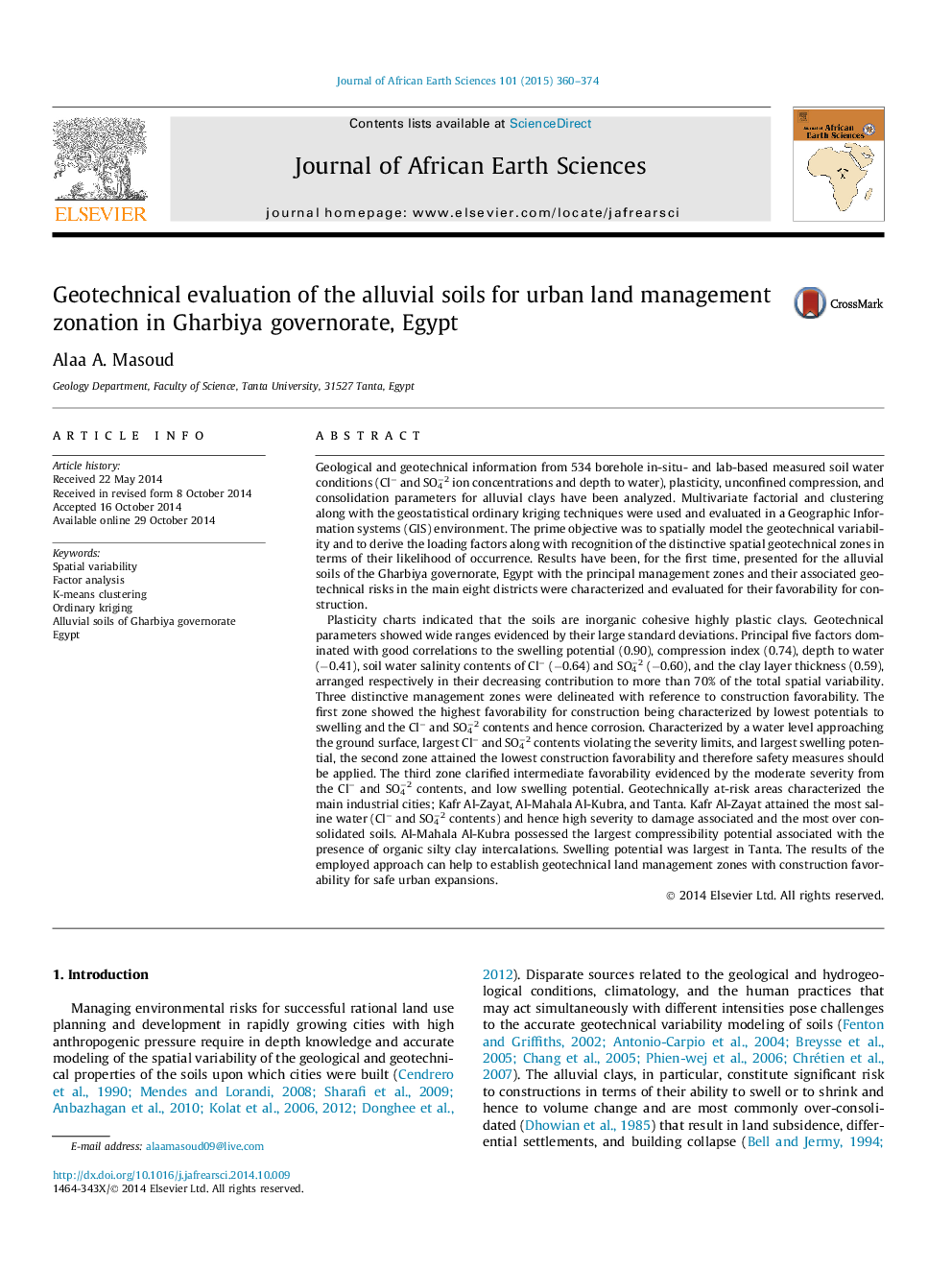| کد مقاله | کد نشریه | سال انتشار | مقاله انگلیسی | نسخه تمام متن |
|---|---|---|---|---|
| 4728681 | 1640206 | 2015 | 15 صفحه PDF | دانلود رایگان |
• Spatial variability of the geotechnical properties of clay soils has been evaluated.
• Swelling/compressibility, water conditions, and thickness governed the variability.
• Three geotechnical patterns were recognized varied in favorability for construction.
• Soils of Kafr Al-Zayat district showed the worst favorability for construction.
• Results provide key references to decision-makers for effective urban planning.
Geological and geotechnical information from 534 borehole in-situ- and lab-based measured soil water conditions (Cl− and SO4−2 ion concentrations and depth to water), plasticity, unconfined compression, and consolidation parameters for alluvial clays have been analyzed. Multivariate factorial and clustering along with the geostatistical ordinary kriging techniques were used and evaluated in a Geographic Information systems (GIS) environment. The prime objective was to spatially model the geotechnical variability and to derive the loading factors along with recognition of the distinctive spatial geotechnical zones in terms of their likelihood of occurrence. Results have been, for the first time, presented for the alluvial soils of the Gharbiya governorate, Egypt with the principal management zones and their associated geotechnical risks in the main eight districts were characterized and evaluated for their favorability for construction.Plasticity charts indicated that the soils are inorganic cohesive highly plastic clays. Geotechnical parameters showed wide ranges evidenced by their large standard deviations. Principal five factors dominated with good correlations to the swelling potential (0.90), compression index (0.74), depth to water (−0.41), soil water salinity contents of Cl− (−0.64) and SO4−2 (−0.60), and the clay layer thickness (0.59), arranged respectively in their decreasing contribution to more than 70% of the total spatial variability. Three distinctive management zones were delineated with reference to construction favorability. The first zone showed the highest favorability for construction being characterized by lowest potentials to swelling and the Cl− and SO4−2 contents and hence corrosion. Characterized by a water level approaching the ground surface, largest Cl− and SO4−2 contents violating the severity limits, and largest swelling potential, the second zone attained the lowest construction favorability and therefore safety measures should be applied. The third zone clarified intermediate favorability evidenced by the moderate severity from the Cl− and SO4−2 contents, and low swelling potential. Geotechnically at-risk areas characterized the main industrial cities; Kafr Al-Zayat, Al-Mahala Al-Kubra, and Tanta. Kafr Al-Zayat attained the most saline water (Cl− and SO4−2 contents) and hence high severity to damage associated and the most over consolidated soils. Al-Mahala Al-Kubra possessed the largest compressibility potential associated with the presence of organic silty clay intercalations. Swelling potential was largest in Tanta. The results of the employed approach can help to establish geotechnical land management zones with construction favorability for safe urban expansions.
Journal: Journal of African Earth Sciences - Volume 101, January 2015, Pages 360–374
